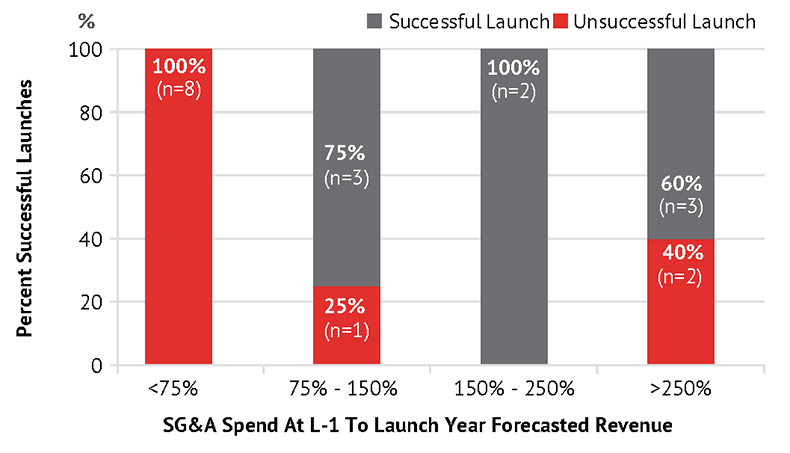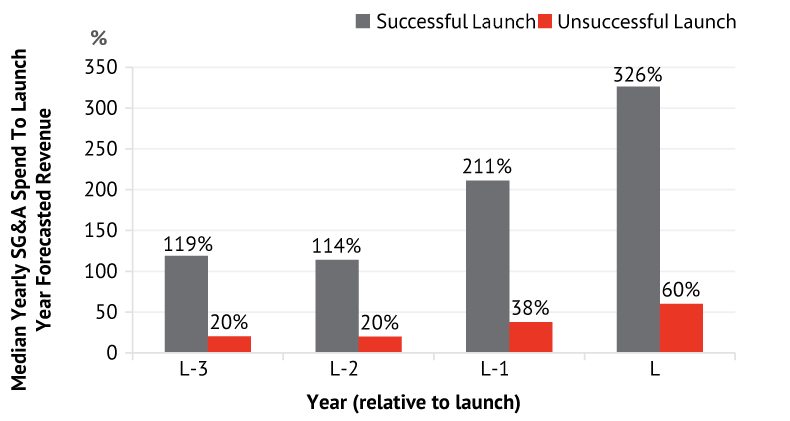There are a variety of factors – both internal to the company and external from the market – that affect a company's pre-launch spend decision.
Key internal factors are a company’s financial situation, level of development risk and corporate strategy. Examples for each factor are illustrated below.
Financial Situation: Companies with a limited budget are more likely to stage-gate spend according to expected development and financial milestones, such as clinical program progression, regulatory filing acceptance/approval, fundraising, and partnering agreements.
Level of Development Risk: When facing lower probability of technical or regulatory success, such as developing unproven classes of drugs/MOAs or launching in therapeutic areas with limited regulatory precedents, companies are more likely to closely monitor or stage-gate spend.
Corporate Strategy: Emerging companies looking to be acquired or to divest their asset may limit SG&A spend in order to preserve their funds-at-hand for development and regulatory activities critical to achieving product approval.
On the other hand, the largest external factors affecting level of spend typically relate to customer base characteristics and the competitive landscape for the product indication.
Disease Characteristics: Depending on the disease characteristics, a product may require a direct-to-consumer (DTC) campaign or a robust disease awareness program, which typically translates into significant SG&A spend.
Competitive Landscape: Companies launching in a highly competitive market will generally spend more in SG&A to differentiate against competitors and demonstrate product value.
While no two companies are the same or face the same circumstances, our analysis provides general guidance on the range of pre-launch and launch SG&A spend that has historically led to successful launches. Emerging companies should be cognizant of their level of spend in light of our findings that spending less than 75% of launch year forecasted revenue resulted in unsuccessful launches across the board. A strategic analysis of influential factors, such as level of development risk, corporate strategy, customer base characteristics and competitive landscape can help emerging companies determine whether to spend more or less, earlier or later in the process as they bring their first product to market.
For more of our thinking on this topic, please Click Here.






